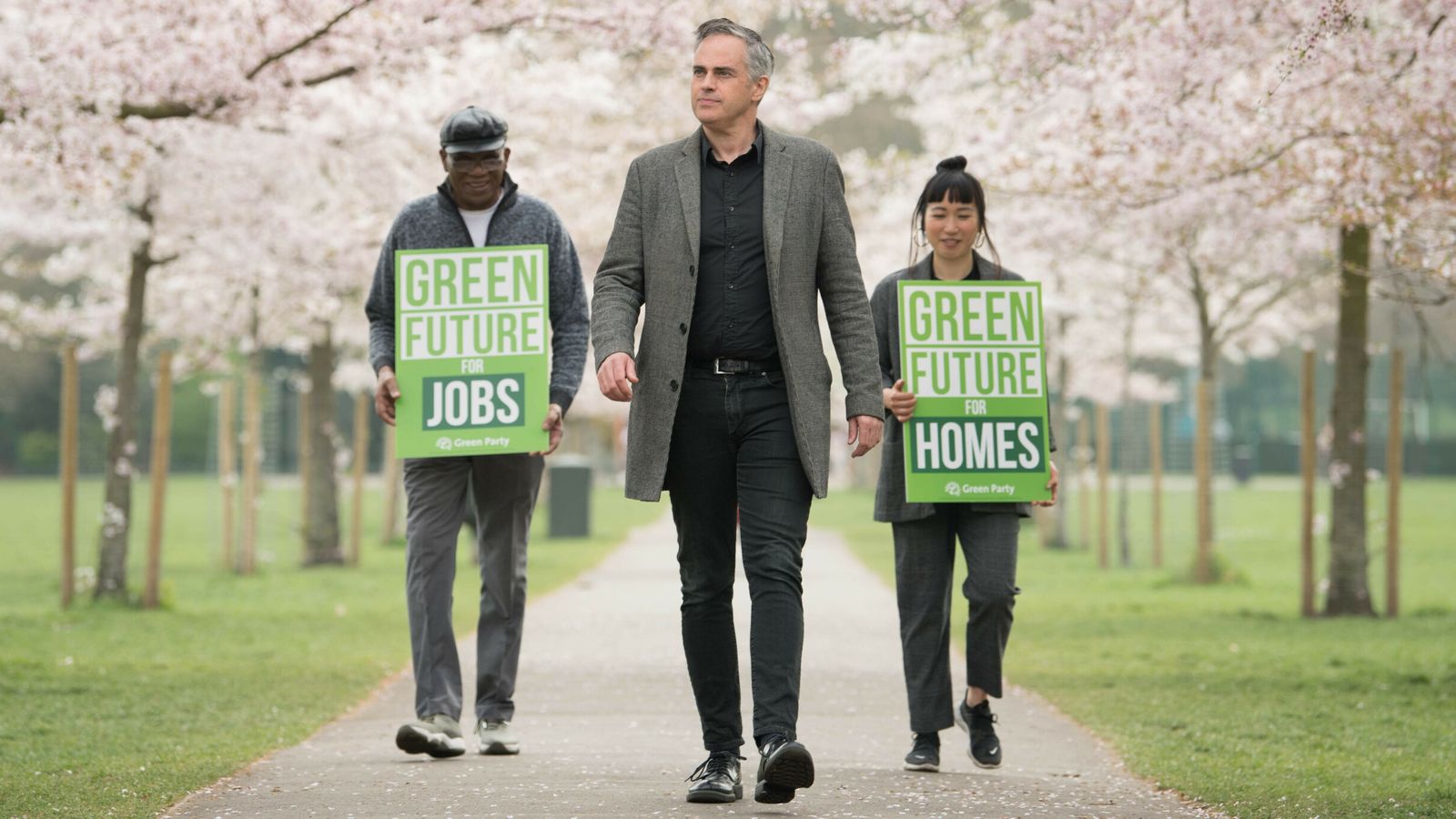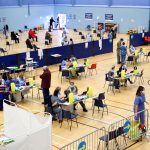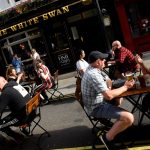The Green Party are aiming to replace the Liberal Democrats as England’s third party after significant gains in the local elections.
They won 88 more seats, compared to the Lib Dems’ increase of seven.
Yet the Greens are far from matching their rival party’s representation in local government.
586 Liberal Democrat councillors were elected last week, compared to 151 Greens.
“We’re staking the claim to become England’s third party,” co-leader Jonathan Bartley told Sky News.
“And we believe we can make that claim right now.
“We are the only party making gains in this election besides from the Conservatives.
“We are taking seats in equal numbers from Labour and the Tories.
“We are the new significant force in British politics. And we’re not a one-issue party. People get that now.”
Mr Bartley’s fellow co-leader, Sian Berry, finished third in London’s mayoral race, increasing her share of the vote.
The Scottish Greens secured eight MSPs, up from six, and ahead of the Liberal Democrats’ four.
The Greens more than doubled their representation on Bristol City Council winning 24 seats, up from 11.
Labour also won 24, down from 33.
“Since lockdown, we’ve knocked on almost all of the doors in the places we won,” said Heather Mack, one of the newly elected councillors.
“Other parties were not doing as much.”
Please use Chrome browser for a more accessible video player
The city’s directly-elected Labour mayor, Marvin Rees, is now under pressure to appoint Green councillors to his cabinet.
“It’s clear that the people of Bristol want the Green Party to have a role in running this city,” said Ms Mack.
“We want to work together but it’s for Marvin to decide.”
A new Clean Air Zone in the city and improved public transport are likely to be among the party’s policy priorities.
Mr Bartley believes the Greens have been historically hampered by the perception they were a wasted vote: “People needed to be convinced that if you vote Green, you get Green. And we’ve reached the tipping point. We have the momentum.”
Election analyst Professor Michael Thrasher argues that the party has also been helped in parts of the country where people had multiple votes
“Bristol is a good example,” he said. “They were electing the whole council in three-member wards, plus the city mayor, plus the regional mayor.
“There is lots of evidence that people were supporting different parties in the same election.
“I strongly suspect people voted Labour on two ballot papers and the Greens on one, or vice versa.”
The party credits a new network of field organisers for steadily building support.
A year ago, Mr Bartley also started a process to choose seats to focus resources on at the next general election.
There is currently one Green MP and 11 Lib Dem MPs.
“We invited local parties to bid to be target seats,” he said.
Subscribe to the All Out Politics podcast on Apple Podcasts, Google Podcasts, Spotify, Spreaker
“We will choose on the basis of the number of activists, the number of councillors, vote share, and whether or not the local MP is popular and hard working.
“We have 20 applications but we are not sure how far we will narrow them down.”
Bristol West and Sheffield Central are likely to be on the final list.
Prof Thrasher suggests the Greens follow the Liberal Democrats’ campaign model from the 1990s and 2000s.
The party enlarged their Westminster group from 20 MPs in 1992 to 62 in 2005.
“They built up a local councillors base over many years and that’s what the Green now have to do before they can push on and win parliamentary constituencies,” he said.
“It’s a catch-22 situation: you can’t advance until you advance.”






















